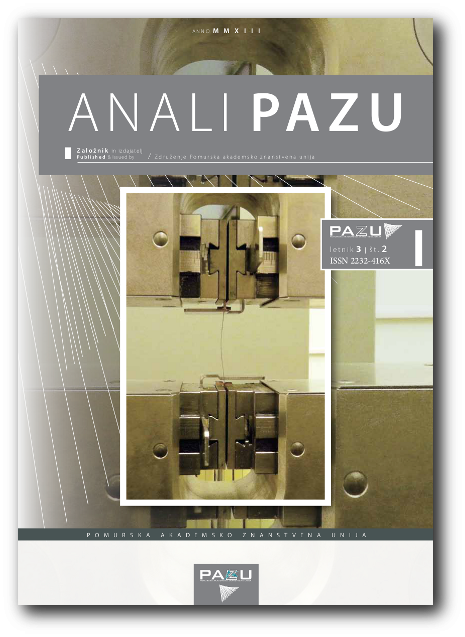Visokotlačni granulirani disipativni materiali za protipotresno zaščito hiš
DOI:
https://doi.org/10.18690/analipazu.3.2.75-86.2013Ključne besede:
Disipativni granulirani materiali, Viskoelastičnost, Protipotresna zaščita, Tlak, Termoplastični PoliuretanPovzetek
V zadnjih letih so bili razviti različni dušilni elementi namenjeni nadzoru struktur v gradbeništvu, kjer eno izmed najbolj obetavnih rešitvah predstavljajo viskoelastični dušilni elementi. V tem prispevku bomo pokazali, da je z uporabo znanja o vplivu inherentnega hidrostatičnega tlaka na časovno in frekvenčno odvisno vedenja polimerov mogoče načrtovati in zgraditi ultimativni izolacijski sistem za uporabo v gradbeništvu. Optimalna rešitev je dosežena z uporabo multimodalnega granuliranega polimernega materiala pod visokim tlakom. Rezultati, na primeru TPU pokažejo, da se z večanjem inherentnega tlaka materiala, iz 1 bar do 2000 bar pomakne frekvenca, pri kateri material izkazuje svoje maksimalno dušenje iz 37 kHz, pri P = 1 bar do 235 Hz pri P = 2000 bar. Hkrati, povečanje inherentnega hidrostatičnega tlaka iz 1 bar do 2000 bar spremeni togost materiala do 2,5-krat, medtem ko so dušilne lastnosti povečajo do 5,2-krat.
